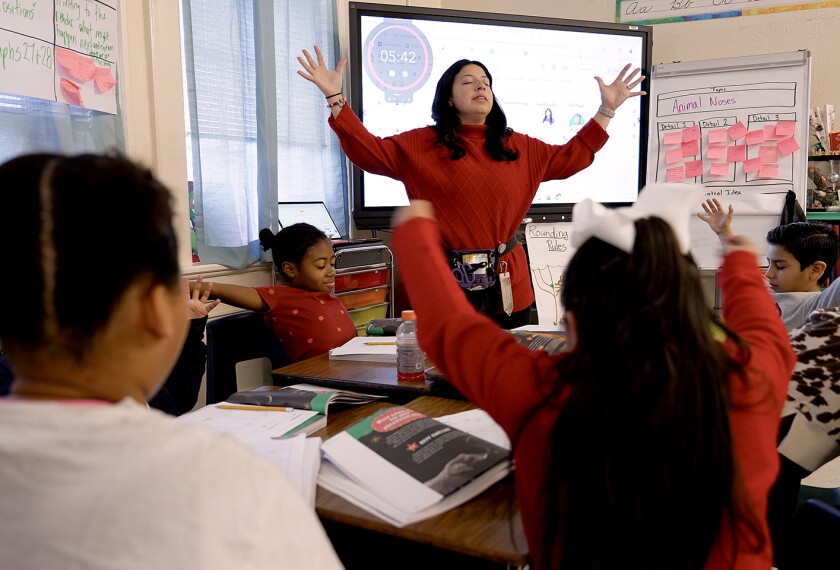The rising costs of participating in organized youth sports is making these activities unaffordable for many families, essentially barring kids and teens from important opportunities to improve their physical health, develop social-emotional skills, and build relationships.
That’s where public schools come in. They can play a vital role in making access to organized sports more equitable, according to the 2023 State of Play report from the Aspen Institute, a think tank.
Youth sports are increasingly privatized, and families must pay to play through fees, uniforms, equipment, travel costs, and other expenses, said Jon Solomon, the editorial director of the Sports & Society Program at the Aspen Institute.
“I think more and more people recognize that you have to provide sports opportunities within the school setting because that’s where most kids are,” he said, and for many students, this will be their only opportunity to play organized sports. “These are kids who have less money, or their parents are working multiple jobs and can’t get them to practices and games.”
Not having the opportunity to play sports at a young age can put kids at a disadvantage when it comes to earning a spot on a high school sports team.
Sports participation is much lower among children from low-income families than among those from high-income families. A quarter of kids from families earning less than $25,000 a year participate in regular sports, compared with 39 percent of kids in families earning more than $100,000 a year, according to the report.
While sports participation among 6- to 12-year-olds from low-income families has gone up over the past four years, participation among 13- to 17-year-olds in that income bracket continues to decrease, dropping from 38 percent in 2012 to 27 percent in 2022.
School and district leaders often assume there isn’t interest in school-sponsored organized sports, said Solomon, especially for elementary and middle school students, because there are often so many opportunities to play through community leagues and organizations.
But experts say that assumption can lead to fewer opportunities for many kids to play sports.
That is why some school districts have started to invest in athletics programs for elementary and middle schools. In the Fairfax County public schools in Virginia, for instance, the district has started track and cross country teams in its middle schools with a $600,000 investment. The goal of the investment is as much about promoting mental health as it is physical health, the district’s superintendent, Michelle Reid, told The Washington Post. Nearly 2,000 students participated in the district’s first cross country meet this fall.
The Baltimore City school district has also launched several sports programs in its middle schools this year, including flag football, basketball, volleyball, cross country, track and field, and indoor and outdoor bocce. Launched through a partnership with the Baltimore-based sports apparel brand Under Armour, the district hopes to make sports more available to girls and students with disabilities, reports WYPR, the Baltimore public radio station.
And Oakland public schools in California will be growing its elementary and middle school sports programs in the coming years through a major investment from the Eat. Learn. Play. foundation.
“There are more and more schools and leaders recognizing that this is important,” said Solomon. “Now, there are capacity challenges, and that can be immense in some districts. But as kids are facing a mental health crisis, there is a greater recognition of the value of being physically active.”
The biggest challenges schools face in launching their own athletic programs, said Solomon, is a lack of facilities, such as gyms and fields, and educators or other adults who are willing to coach the teams, schedule games, and procure uniforms and equipment. But schools can do a lot with a little creativity, he said. (The Aspen Institute has created a sports equity toolkit to help students advocate for sports programs.)
Some approaches to address those challenges include using cafeterias as gyms, partnering with community organizations to provide coaches and other volunteers, and limiting sports seasons to six to eight weeks.
“You can also just have programming after school that is teaching and exposing kids to the sports. Some of the best ways to do that is by bringing in partners from your community,” Solomon said. “It’s a great opportunity as well for the community programs. Take youth soccer as an example: youth soccer associations that want to grow the sport, why would you not want to come into schools and find ways to subsidize this?”





